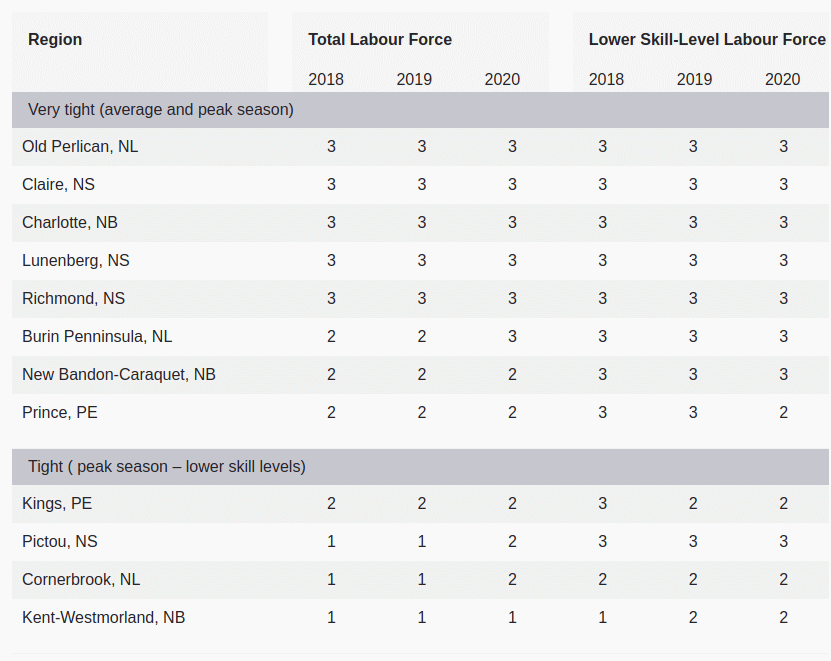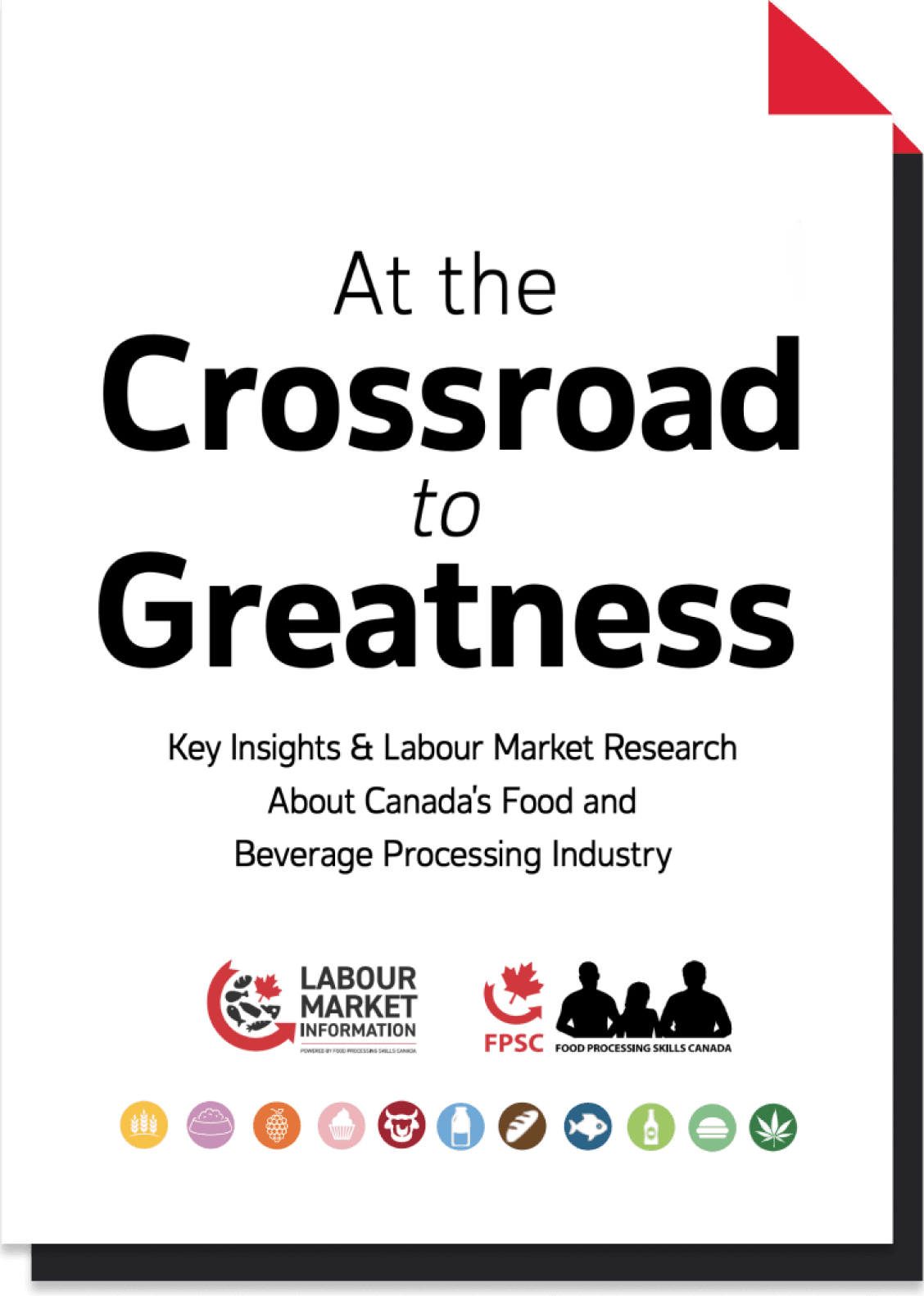Labour Market
Tightness
The labour market is said to be “tight” if vacant jobs are plentiful and available workers are scarce — the situation that the Canadian manufacturing sector finds itself in.

Labour Market Tightness
The concept of labour market tightness applies to all economic sectors in Canada but is particularly important to food and beverage manufacturers in understanding the balance between the demand for labour and the supply of labour. This type of analysis is especially helpful in sector-based, regional labour market research and has been used most recently in the meat and seafood labour market assessments conducted by Food Processing Skills Canada.
The rating of labour market tightness is a system of levels from 1 through 3. A labour market tightness rating of 1 refers to a regional labour market that meets employment demands, and a rating of 3 refers to a regional labour force that does not meet the employment demands. A ranking of 2 falls in between, with only some demands being met. You can clearly see where the regional challenges sit for the meat and seafood sectors in the graphs below:
Securing Canada’s Meat Workforce Final Report, 2019

Region
Total Labour Force
2018
2020
2025
Lower Skill-Level Labour Force
2018
2020
2025
| Brandon, MB | 3 | 3 | 3 | 3 | 3 | 3 |
| Brooks, AB | 3 | 3 | 3 | 3 | 3 | 3 |
| Rivière-du-Loup, QC | 3 | 3 | 3 | 3 | 3 | 3 |
| Saint-Esprit, QC | 3 | 3 | 3 | 3 | 3 | 3 |
| Wynyard, SK | 3 | 3 | 3 | 3 | 3 | 3 |
| Kings County, NS | 2 | 3 | 3 | 3 | 3 | 3 |
| Levis, QC | 3 | 3 | 3 | 3 | 3 | 2 |
| Chilliwack, BC | 2 | 2 | 2 | 3 | 3 | 2 |
| Guelph, ON | 1 | 1 | 1 | 2 | 2 | 2 |
| High River, AB | 1 | 1 | 1 | 1 | 1 | 1 |
| Langley, BC | 1 | 1 | 1 | 1 | 1 | 1 |
| Toronto, ON | 1 | 1 | 1 | 1 | 1 | 1 |
| Hamilton, ON | 1 | 1 | 1 | 1 | 1 | 1 |
| Winnipeg, MB | 1 | 1 | 1 | 1 | 1 | 1 |
Securing Canada’s Fish + Seafood Workforce Final Report, 2019

Region
Total Labour Force
2018
2019
2020
Lower Skill-Level Labour Force
2018
2019
2020
Very tight (average and peak season)
| Old Perlican, NL | 3 | 3 | 3 | 3 | 3 | 3 |
| Claire, NS | 3 | 3 | 3 | 3 | 3 | 3 |
| Charlotte, NB | 3 | 3 | 3 | 3 | 3 | 3 |
| Lunenberg, NS | 3 | 3 | 3 | 3 | 3 | 3 |
| Richmond, NS | 3 | 3 | 3 | 3 | 3 | 3 |
| Burin Penninsula, NL | 2 | 2 | 3 | 3 | 3 | 3 |
| New Bandon-Caraquet, NB | 2 | 2 | 2 | 3 | 3 | 3 |
| Prince, PE | 2 | 2 | 2 | 3 | 3 | 2 |
Tight ( peak season – lower skill levels)
| Kings, PE | 2 | 2 | 2 | 3 | 2 | 2 |
| Pictou, NS | 1 | 1 | 2 | 3 | 3 | 3 |
| Cornerbrook, NL | 1 | 1 | 2 | 2 | 2 | 2 |
| Kent-Westmorland, NB | 1 | 1 | 1 | 1 | 2 | 2 |
Research can evaluate the level of tightness in a region by considering factors such as availability and concentration of labour potential. Factors such as regional competition, salary levels, educational requirements and travel distances are important variables to calculating the likelihood a manufacturing business will have in attracting and retaining employees. The calculation of labour market tightness also assists employers with Labour Market Impact Assessments when looking to secure temporary foreign workers.
Featured reports
Resources
Videos & Webinars
On demand videos & webinars on a variety of topics.
Career Ladders
Learn about career ladders in the food and beverage processing industry.
Employer Programs
Employer programs for Canada’s food and beverage processing industry.







